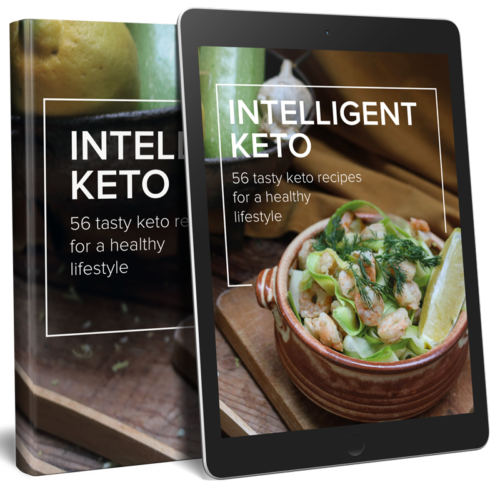Breaking free from bad eating habits is hard, especially if you’re used to – and addicted – to junk food. It’s cheap, tastes amazing, needs very little time to prepare (if at all), and you’ll find it literally everywhere.
On the contrary, healthy foods aren’t as accessible for many. They may taste great too, but not right off the bat as most need to be prepared and cooked (check out Intelligent Keto if you want easy recipes!). Plus, they’re not as cheap as junk food – or so many people think.
With that said, is eating healthy expensive? Or is this nothing more than an unhealthy myth? Scroll down to know the answer!
What does healthy eating mean?
Healthy eating refers to making smart food choices and eating a well-balanced diet. This means consuming nutrient-dense foods which give you all the nutrients your body needs to function properly, such as fat, carbohydrates, protein, vitamins, minerals, and water. Unfortunately, you won’t find much of these nutrients in calorie-rich junk foods, like potato chips, pizza, milk shakes, sweetened drinks, and other commercially processed foods.
So, where do you get all these nutrients from? Check out this table outlining some of the very best sources of macronutrients and micronutrients:
| Protein | Seafood, meat, poultry, eggs, nuts, seeds, dairy products |
| Carbohydrates | Whole grains, whole wheat, potatoes, legumes, corn, beans, fiber-rich fruits, starchy veggies |
| Fats | Fatty fish, eggs, nuts, seeds, avocados, olive oil, peanut oil, cheese, dairy |
| Minerals | Nuts, seeds, organ meats, eggs, beans, shellfish, veggies |
| Vitamins | Liver, eggs, seafood, dairy, seeds, poultry, meat, fruits, vegetables |
Is eating healthy expensive? And is it true that healthy foods cost more?
According to Carlson and Frazao (1), healthy food is cheaper in terms of these price metrics: price per 100g of edible weight and price per average portion. However, in terms of price per calorie, they found the opposite to be true, that is, healthy food is more expensive. This is interesting because according to Rao et al.’s study (2), healthier diets cost about $1.54 more per 2,000 kcal, which supports the theory that healthy foods cost more in terms of price per calorie.
Here’s an example:
| Broccoli Bunch | Pepperoni Pizza | |
| Price | $2.44/lb (1lb=453.592g) | $4.88 per 40.8oz pack (2.55lb) |
| Price per lb | $2.44/lb | $1.91/lb |
| Serving size | 5.22oz or 148g | ½ pizza or 5.1oz or 145g |
| No. of servings | 3 | 8 |
| Price per serving | $0.813 | $0.61 |
| Calories per serving | 50 calories | 330 calories |
| Price per calorie | $0.0488/calorie | $0.0058/calorie |
On a per calorie basis, broccoli appears to be more expensive than pepperoni pizza. You only get 3 servings out of a pound of broccoli, whilst the pizza pack is good for 8 servings. You need to consume about 6 servings of broccoli to receive the same number of calories in a serving of pizza:
Broccoli --> 50 calories/serving x 6 servings = 300 calories --> You’d need to spend $4.88 for 300 calories
Pepperoni pizza --> 330 calories/serving --> You’re only paying $0.61 for 330 calories
With that said, pizza is definitely good value for money in terms of calories. However, food is so much more than just calories. We eat food for sustenance, energy, and immunity, which is why it’s important to eat a well-balanced diet.
Nutrient-wise, we all know who’s the real winner… broccoli! Unlike the cheaper pizza party pack, broccoli is an excellent source of antioxidants, fiber, vitamin C, vitamin K, folic acid, and many other essential vitamins and minerals!

Not everyone can afford to make the healthy choice
Factors like cost, income levels, and availability influence our food choices. Even physical factors like time and cooking skills can affect our choices as well (3), which is why instant meals and fast food are extremely popular. Why cook when you can just grab a ready meal at a burger joint, right? Or like the pepperoni pizza example, just pop one in the microwave and you’d have a hot pizza in a minute!
But why is this so?
Well, according to a study published in the Journal of Consumer Researchers (4), there is a link between perceived healthiness of food and its expensiveness. Researchers did a series of tests which supported the “healthy-is-expensive intuition.”
One interesting finding was that when given a budget, participants chose the cheaper option even though they weren’t as healthy as the more expensive products. So, choosing between a higher-calorie pizza pack over a pound of healthy broccoli becomes an easy choice for the budget-conscious.
Fortunately, eating healthy need NOT be expensive!
Follow these tips to save some money whilst still feeding yourself and your family healthy, nutritious meals.
1) Cook at home
Cooking at home not only helps you save money, it also helps you save on unnecessary calories, carbs, sugar and fat (5).

Another benefit to home cooking is that you can prepare your meals for the week. There’s a bit of upfront work involved – planning, cooking, dividing the meals up, labelling the food containers, etc. – but the good thing is you’ll have it easy the rest of the week.
There’s a bit of a learning curve involved when it comes to cooking, but once you get the basics right, you’ll be up to speed in to time at all.
There are plenty of free resources and recipes on the web (check out Intelligent Keto), so really all you need is some spare time.
2) Pick normal produce over organic ones
There’s good reason why organic produce is more expensive than ordinary ones. They’re pesticide and synthetic chemical-free, which means they’re cleaner and generally healthier than non-organic produce. However, when it comes to nutrition, they are NOT significantly more nutritious than ordinary produce (6).
So, don’t feel too bad if your budget doesn’t allow for products with an ‘organic’ sticker plastered on it. You’ll save money and still get the same nutrients as organic ones.
3) Buy at farmer’s markets
Buying at farmer’s markets do have a lot of advantages. For instance, you get fresher and better-tasting produce and you’re supporting local farmers at the same time. There’s less travel and handling time as opposed to produce found at the supermarket, especially those imported from abroad. More often than not, in-season products are also sold cheaper in farmer’s markets.
4) Have a list before you go shopping
Creating a shopping list – and sticking to it – can do a lot of wonders for your wallet. This is a great time to have tunnel vision so you can stick to what’s on your list. This way you avoid loitering and looking around at the aisles waiting for something to catch your eye. This tip works really well with meal planning, too!
Related article: New To Keto? Here’s Your Complete Keto Shopping List

5) Buy in bulk and stock up on frozen produce
A freezer is a great investment. You can buy in bulk and stock up on frozen delights for several months and enjoy food you love no matter the season! With a well-stocked freezer, you have instant access to healthy food, which means fewer trips to the supermarket. By buying in bulk, you also get to do your share in helping the environment, since there’s less packaging and less waste involved.
6) Grow an indoor herb garden
Growing your own herbs is another excellent way to save some money and eat healthy at the same time. The good thing is you don’t need lots of space for an indoor garden. Simply clear out a bit of space which gets natural sunlight. This can be a nook, corner or countertop and just put your pots of herbs in there. Check out our guide on how to grow your very own indoor herb garden.
Conclusion
To sum up this post “is eating healthy expensive”, the answer is both yes and no. Yes, it’s more expensive than junk food from a purely price per calorie angle. But a big NO in terms of nutrition and its overall effects on your health.




